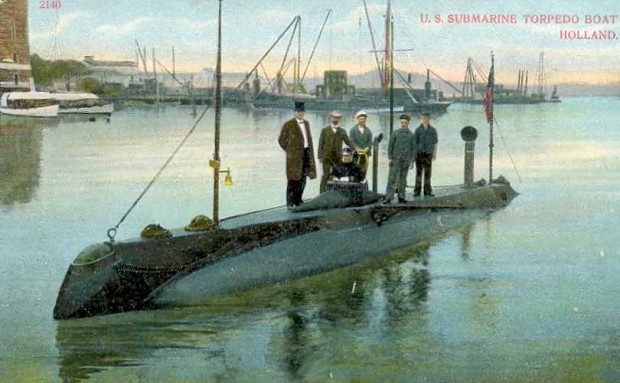As the 19th century drew to a close, submarine design innovation began to accelerate. Irish inventor John Phillip Holland, working in America, resolved the thorny problem of propulsion by combining an internal combustion engine for surface travel with electric battery power for submerged operation. The “Holland Type VI,” his most successful model, became the U.S. Navy’s first commissioned submarine in 1900.
In the first decade of the new century diesel engines became the preferred source of surface propulsion, reducing the fire danger posed by gasoline or kerosene engines. More powerful battery-driven electric motors provided greater range underwater. A further innovation allowed batteries to be recharged by a submarine’s main engines while running on the surface. During this period, France introduced the now-classic double-hull design (a pressure hull inside an outer hull).
On the eve of World War I, the Royal Navy fleet included 74 submarines, 15 of which were oceangoing boats with a range of 2,500 miles and cruising speed of ten knots. These were the first submarines equipped with a deck gun forward of the conning tower, producing a silhouette recognizable as the first modern submarine.
Yet, with all these innovations and developments, the submarine’s full potential as a weapon of war was not apparent to Europe’s naval commanders. Battle strategies anticipated squadrons of surface vessels, led by massive battleships (dreadnaughts) throwing shells 20 miles or more, slugging it out for control of the high seas. By contrast, the submarine was seen as best suited for coastal protection and attacking blockades.
But World War I would lead to changes in naval strategy and tactics that would favor the submarine’s unique characteristics. More about that in our next blog.





